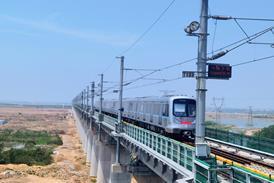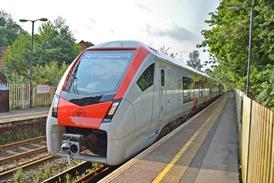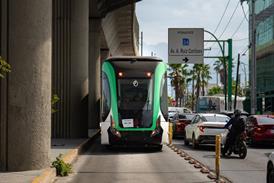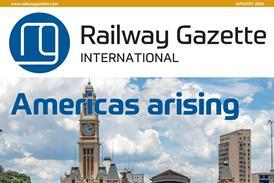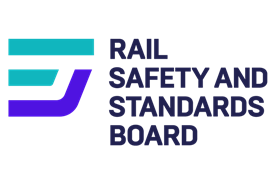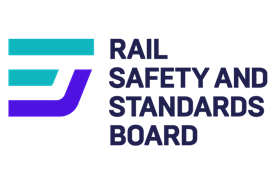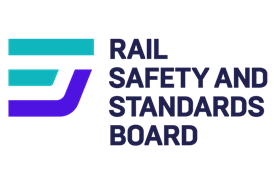INTRO: Italian State Railways has awarded contracts for the installation of automatic train protection equipment on 150 route-km between Milano and Torino, and on the Milano Junction, based on the latest European data transmission standards
BYLINE:
Mario Poggio
Head of On-Board Systems Engineering
Ansaldo Segnalamento Ferroviario
FACED WITH increasing difficulties in the construction of new lines, Italian State Railways has launched a series of projects to enhance its existing trunk lines to boost the quality of service and at the same time improve the safety of operations.
One of the most significant improvements under way this year and next is the installation of automatic train protection on routes around Milano at a cost of 93bn lire. Four contracts have been awarded to a consortium of Ansaldo Signal, Adtranz, Sasib Railway and Siliani EI for the supply of intermittent ATP, known in Italy as Combinato ATC. Combinato provides additional functions beyond the basic ATP role, although it does not strictly have all the capabilities of a full ATC application.
The contracts cover lineside equipment on the Milano - Torino line (150 km of double track, 200 trains per day) and the Milano Junction loop around the city (350 route-km of double track, 1200 trains per day). On-board equipment will be fitted to 314 electric locomotives. Ansaldo Signal’s Italian arm Ansaldo Segnalamento Ferroviario will be responsible for works totalling 32bn lire.
The ATP installation will meet a number of FS strategic objectives.
Running safety is guaranteed by continuous supervision of the driver’s actions with automatic emergency brake intervention whenever the speed limit is passed.
Regularity of running will no longer be determined by environmental or seasonal factors, increasing reliability of services.
A reduction in operating costs is achieved through the potential to operate trains with only a single driver where two had previously been required.
The FS short and medium-term strategy envisages equipping between 5000 and 6000 track-km and at least 2000 locos with intermittent ATP equipment. The initial contracts cover approximately 10% of this total requirement.
The system requirement is based on the data transmission technology selected for the European Train Control Systems project, in which ASF is an active participant. The Combinato solution meets the specifications of both ETCS and the European Rail Traffic Management System, allowing for future interoperability between trains belonging to different European railways.
Multiple functions
Intermittent ATP will provide a significant advance in train running protection and control systems on the FS network. At present FS has some lines equipped with Continuous Cab Signalling (with four or nine codes depending on line speed) and others fitted with Coded Current Automatic Block, which offers full speed control.
Combinato is designed to be easily integrated with these different systems, and offers a powerful channel for transmitting data from lineside to train. This can be used not merely for train running and protection against driver errors, but also for auxiliary functions to optimise train operations.
On-board equipment will interface with the existing four-code CCS, which will in future only be able to access the various peripheral elements - driver display panel, traction and braking interfaces, and so on - via the intermittent ATP processor. Hence the name ’Combinato’ for the combination of continuous and intermittent systems.
The basic on-board package comprises three main elements. Heart of the system is the ALA processor, which manages all data coming from both the intermittent and continuous channels. It also controls the peripheral elements such as the emergency air brake controls, traction interfaces and the driver display panel.
The Balise Transmission Module (BTM) and pick-up antenna (RSDD) are capable of operating on lines equipped with 12-bit or 180-bit balises. The antenna is also designed for future operation with 1023-bit ETCS balises.
Equally innovative is the Man-Machine Interface (MMI), which combines image processing with a colour graphic display, pushbuttons and function keys. These are used to enter train data and to allow the driver to respond to the indications on the display panel (Acknowledgement, Pre-acknowledgement, Brake reset, Supervision etc.). The MMI also provides a diagnostics terminal for the entire system.
When operating in functional ATP mode, the display shows the maximum allowed speed, braking curve, the distance to any restriction, future speed limits or train stopping points, and auxiliary information, such as the location of work teams, level crossings and other stations. In CCS mode the display shows vital indications for the signal aspects represented by the line codes being picked up.
Lineside modules
Combinato’s intermittent lineside equipment is based around so-called ’Information Points’ which have one or more fixed or programmable 180-bit balises. These are installed close to signals and at specific points along the line where data must be transmitted to the trains. The balises are installed in the centre of the track and can be used to transmit different data to trains running in each direction.
The interface between the signalling and the balises is provided by a series of encoders, which are installed in the station equipment rooms, or in cabinets along the line. These encoders are able to control balises up to 3 km away through serial connections, allowing the control equipment to be centralised at the stations. This has considerable advantages in terms of reliability and the ease of performing checks and maintenance.
To establish the allowable speed at any instant, the on-board ATP processor draws data from a variety of lineside and on-train sources. Lineside information includes fixed route characteristics such as the line speed limit and gradients, semi-fixed data such as temporary speed limits due to works in progress, and variable data including signal aspects, approaching station stops or speed reductions for diverging routes.
On-train data
On-board data includes the train length, percentage of braking power, permissible train and locomotive speed ranges, and the number of drivers assigned to drive the train. On the basis of all this data, the ALA processor continuously calculates the maximum allowable speed and braking curve.
Various system operating modes are provided.

